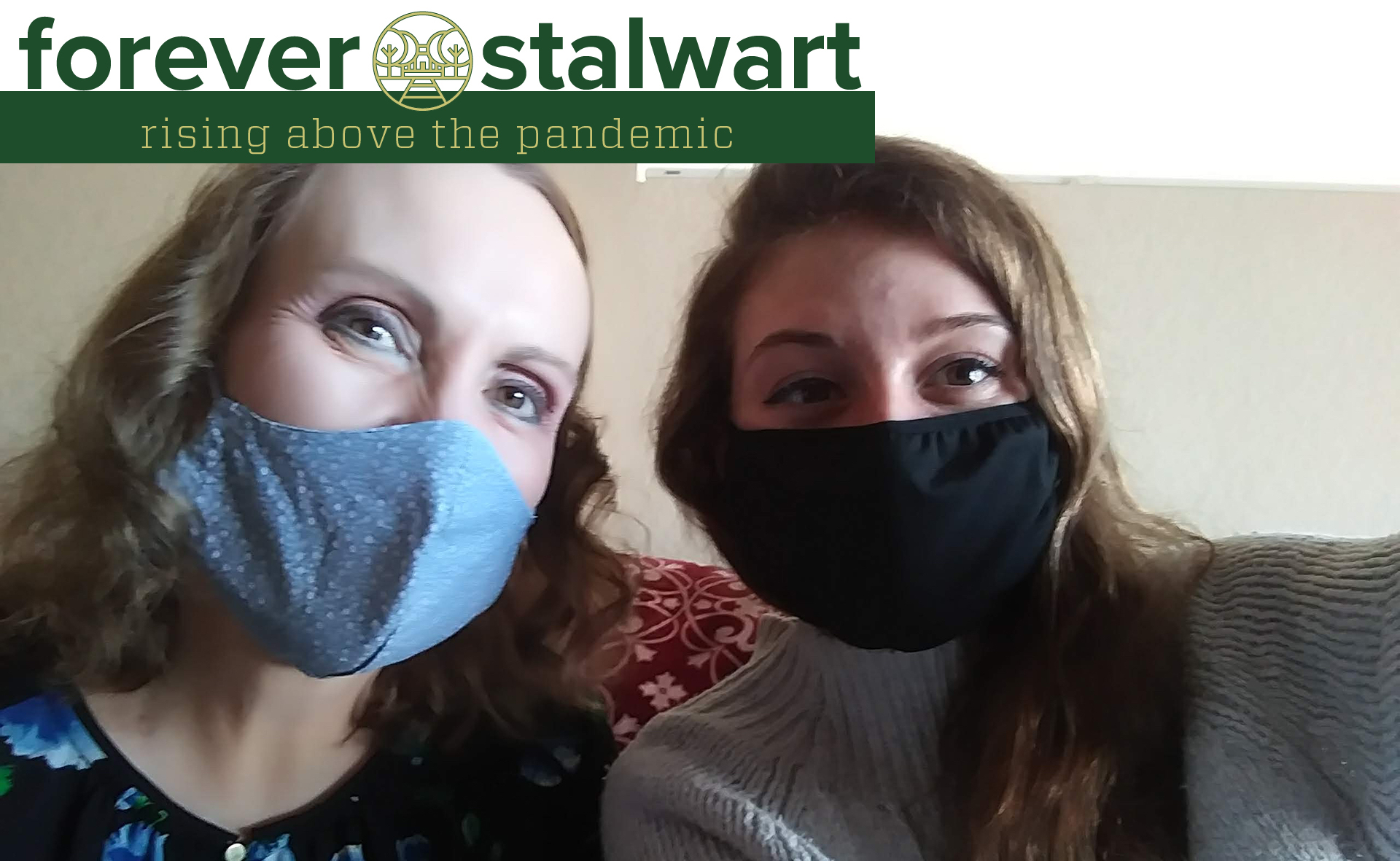
CSU neuroscience major Paige Riley, right, has helped her client, Jocelyn, with technological challenges during the pandemic.
The COVID-19 pandemic has created social isolation for many older adults — and has put a damper on many internship opportunities for college students.
So a group at Colorado State University launched a program in which students are paired with senior citizens in the community to provide support in a variety of areas, including exercise and wellness, nutrition counseling and technical support for computers and software.
The project, called THRIVE, was launched last fall with federal CARES Act funding from the Larimer County Department of Human Services Office on Aging. THRIVE stands for Technology and tunes, HABIC (Human-Animal Bond in Colorado) pet interactions, Respite, Individualized nutrition, Virtual services, and Exercise and engagement.
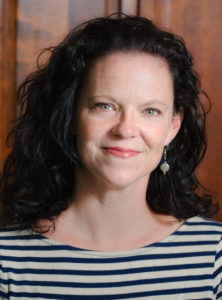
Deana Davalos, a professor in the Department of Psychology, director of the Aging Clinic of the Rockies and associate director of the Columbine Health Systems Center for Healthy Aging at CSU, is leading the project, which has paired about 20 older adults with students from her department and several other units on campus.
“It’s very much driven by what the participants want,” Davalos said. “We give them a menu of different resources and services and let them choose.”
Workouts and wellness
Bryan Adams-Colon, a senior in the Department of Health and Exercise Science, and Brianne Corbett, an alumna of that department and a current student in CSU’s master’s in public health program, have worked with older adults on exercise and wellness, providing workout videos and programs customized to participants’ needs. The students are supported by department faculty members Karyn Hamilton, Kimberly Burke and Wendy DeYoung.
Corbett, who is acting as a project mentor to Adams-Colon, said that while they offer participants everything from stretching, strength training and endurance exercises to balance, meditation and relaxation activities, sometimes what they need is simply some socializing.
“They are feeling isolated, so they just want somebody to talk to,” Corbett said. “That’s what happened with our first participant — they just wanted to talk on the phone. We didn’t really get anywhere with the exercise portion of it; they just loved to chat. Even if they’re not watching the videos, at least we’re giving them something. Obviously, exercise is our main goal, but as long as we can provide some resources or services to those individuals, that’s what matters.”
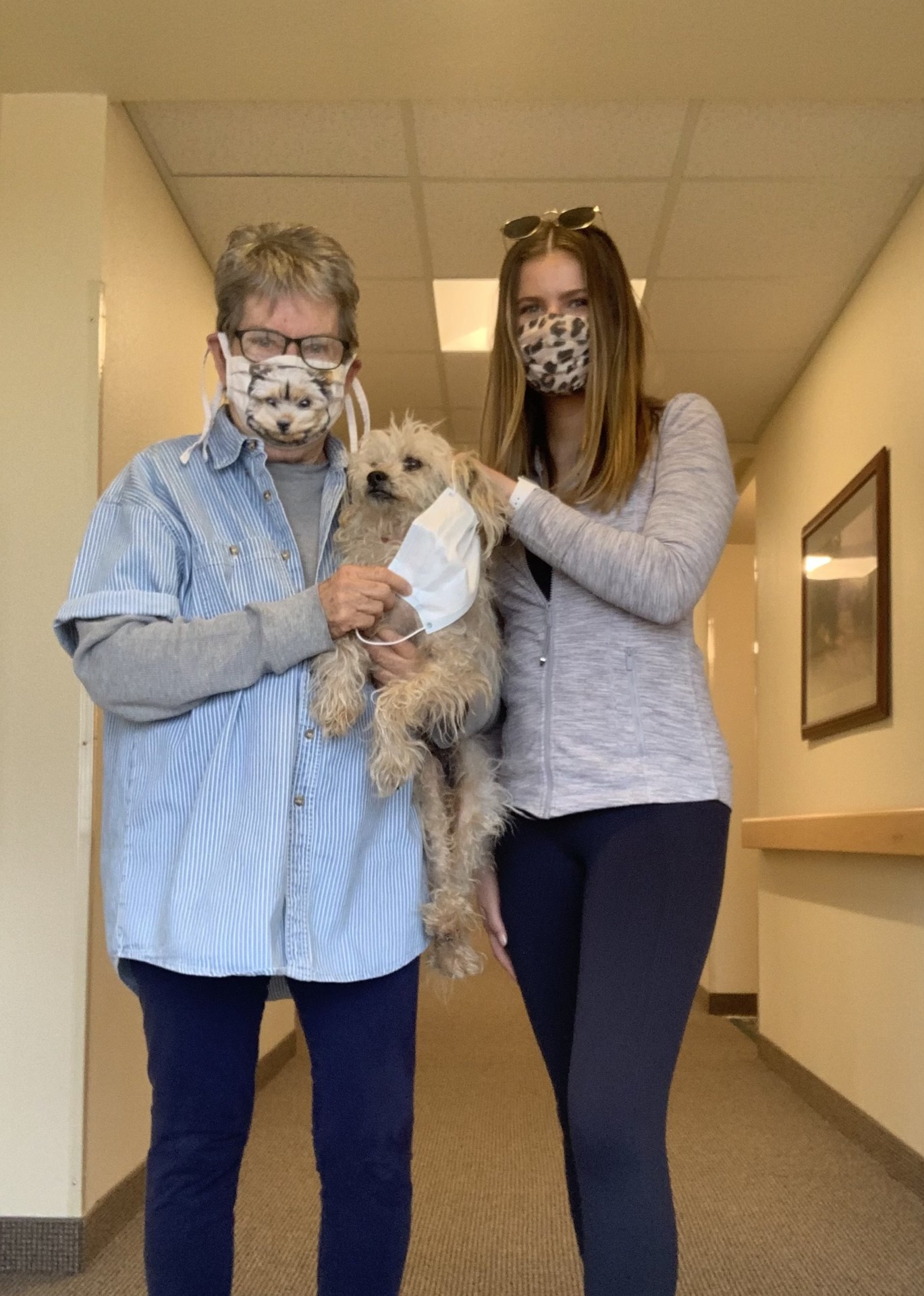
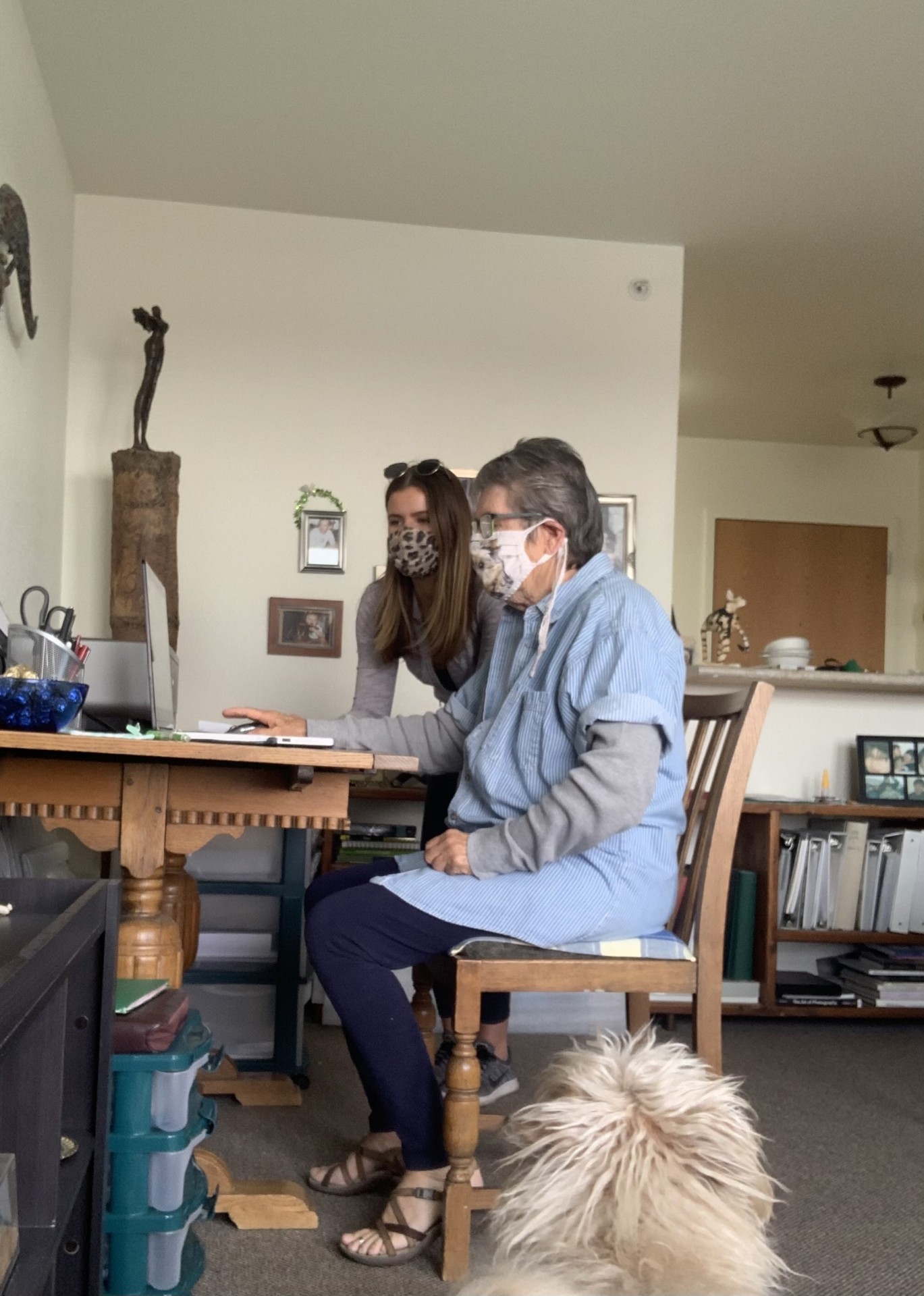
CSU psychology student Katie Riggs has been helping Ronda Stone and her dog Marley as part of the THRIVE project.
More than exercise
“Wellness isn’t just exercise; being healthy isn’t just exercise,” Adams-Colon added. “It’s mental health and social health too. If we can hit at least two out of the three, that’s always positive. It’s hard for them right now to see their grandkids and children and have that social aspect.”
But he also said that he’s been surprised at how active most of his clients have been.
“Some of them walk more steps than I do in a day,” Adams-Colon said. “They do other workouts and chores around the house. They don’t like to be sedentary; they don’t like to just sit at home and watch TV. They like to get up and walk around, and I think with the pandemic, it’s hard for them because they don’t want to get infected or go out and put themselves at risk.”
Basia Dabrowski, a CSU alumna who started working with Davalos three and a half years ago as an undergrad psychology major and was a clinical intern at the Aging Clinic of the Rockies, is serving as program coordinator of THRIVE. She has an introductory meeting with participants, identifies their needs, and connects them with students like Corbett and Adams-Colon. Dabrowski and others have even made some in-person house calls to participants to help them with technological challenges like learning how to use Zoom.
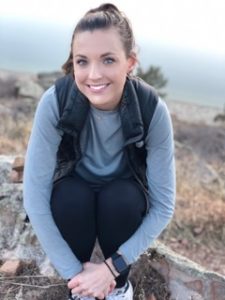
Zoom made simple
Corbett said Dabrowski helped one participant set up Zoom on his computer.
“He said, ‘I could’ve been talking to my family this entire time, and I just didn’t know it was that easy,’” she said. “So that’s hard too, when you just don’t know, and you’re not comfortable with the software or computers. That was so sad that he could have been having that interaction the entire time and was feeling so isolated and alone. They’re so ecstatic to have the help.”
Shelby Cox, director of the Kendall Reagan Nutrition Center, says her staff and students provide individualized goal-setting and coaching on things like healthy eating habits, special dietary needs, grocery shopping decisions, cooking, and storing food and keeping it fresh. The Columbine Health Systems Center for Healthy Aging offers live group exercise sessions once a month. Plans call for expanding THRIVE to include music therapy and more animal-related activities, such as the visits with pets that HABIC provides.
One participant, Ronda Stone, said psychology student Katie Riggs has been invaluable to her and her dog Marley.
“Marley and I have been lucky to have Katie Riggs from the THRIVE Program enter our lives,” she said. “Katie walks Marley, who can be stubborn and fearful at times. She has also helped me put together two pieces of furniture, which would have made me crazy. Katie has helped me clean up my laptop and is currently working with me to get my photographs onto Fine Art America, eBay and Facebook. We really do appreciate Katie and what the THRIVE Program has done for us.”
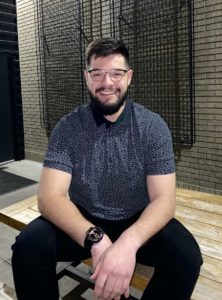
‘Technologically challenged’
Another participant, Jocelyn, agreed.
“Paige [Riley] has helped me tremendously with all kinds of tech issues, ranging from fixing my Fitbit watch to setting up my Google Nest device to setting up my scanner on my printer and teaching me numerous skills on Facebook and answering several other general computer questions,” she said. “Unlike me, anything that Paige doesn’t know, she researches and figures out. Need I say I am extremely technologically challenged? I’m not 16 anymore, and wasn’t born with a computer in the womb like young people are today. So I am so grateful to Paige!”
She added that Adams-Colon and Kalyn Garcia in the nutrition center have improved her quality of life as well.
“Bryan has sent me wonderful exercise videos that I saved on my computer for future use, since I broke my knee and had cataract surgery and can’t currently use them,” she said. “But I definitely will later. And Kalyn is a registered dietician who is helping me with my nutritional needs. I love the THRIVE program and recommend it to everyone who is considering it.”
The program benefits the students in multiple ways as well.
“This is a practicum, so it’s good preparation for my career,” Adams-Colon said. “Plus, I think it’s pretty awesome to make an impact on people’s lives, even if I’m just sending them a video library.”
“Obviously, it’s great for experience and your resume, but just knowing you can make a difference in somebody’s life feels really good,” Corbett added. “Ageism is a huge issue in our society, and being able to provide people with these resources is a great thing. That’s my big focus, and why I wanted to be part of this project. I think about it as if it were my grandma — I would want her to have these things.”